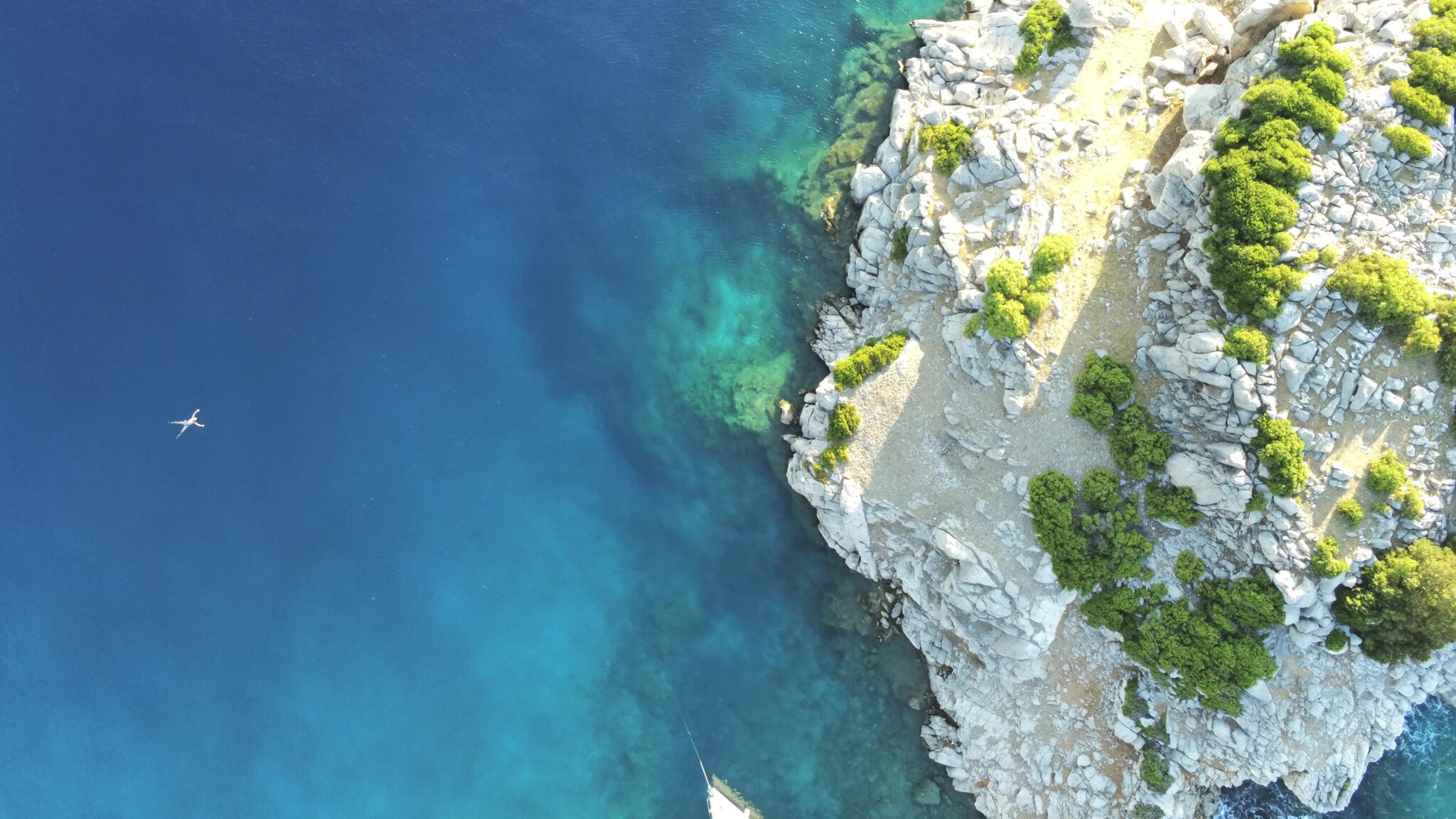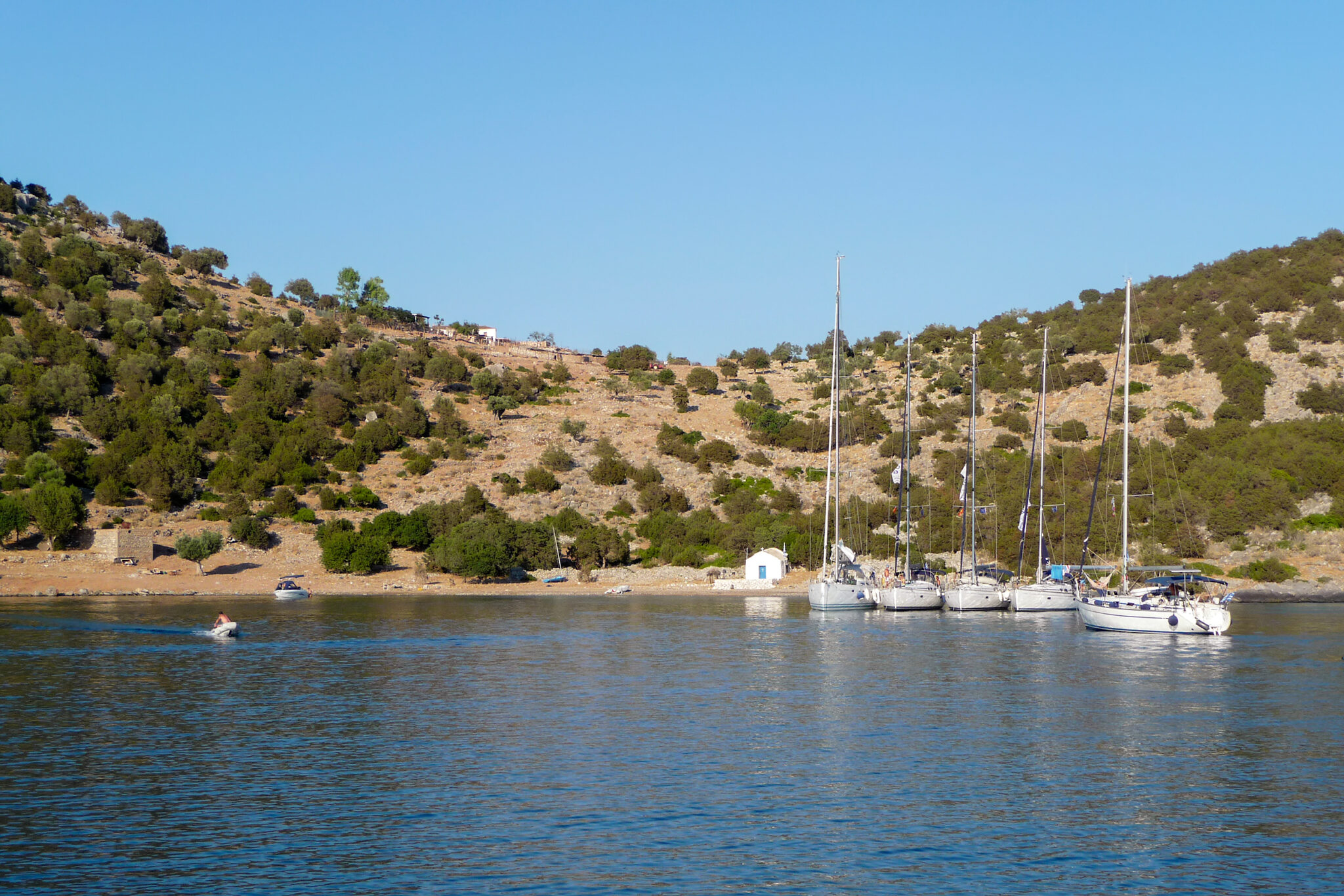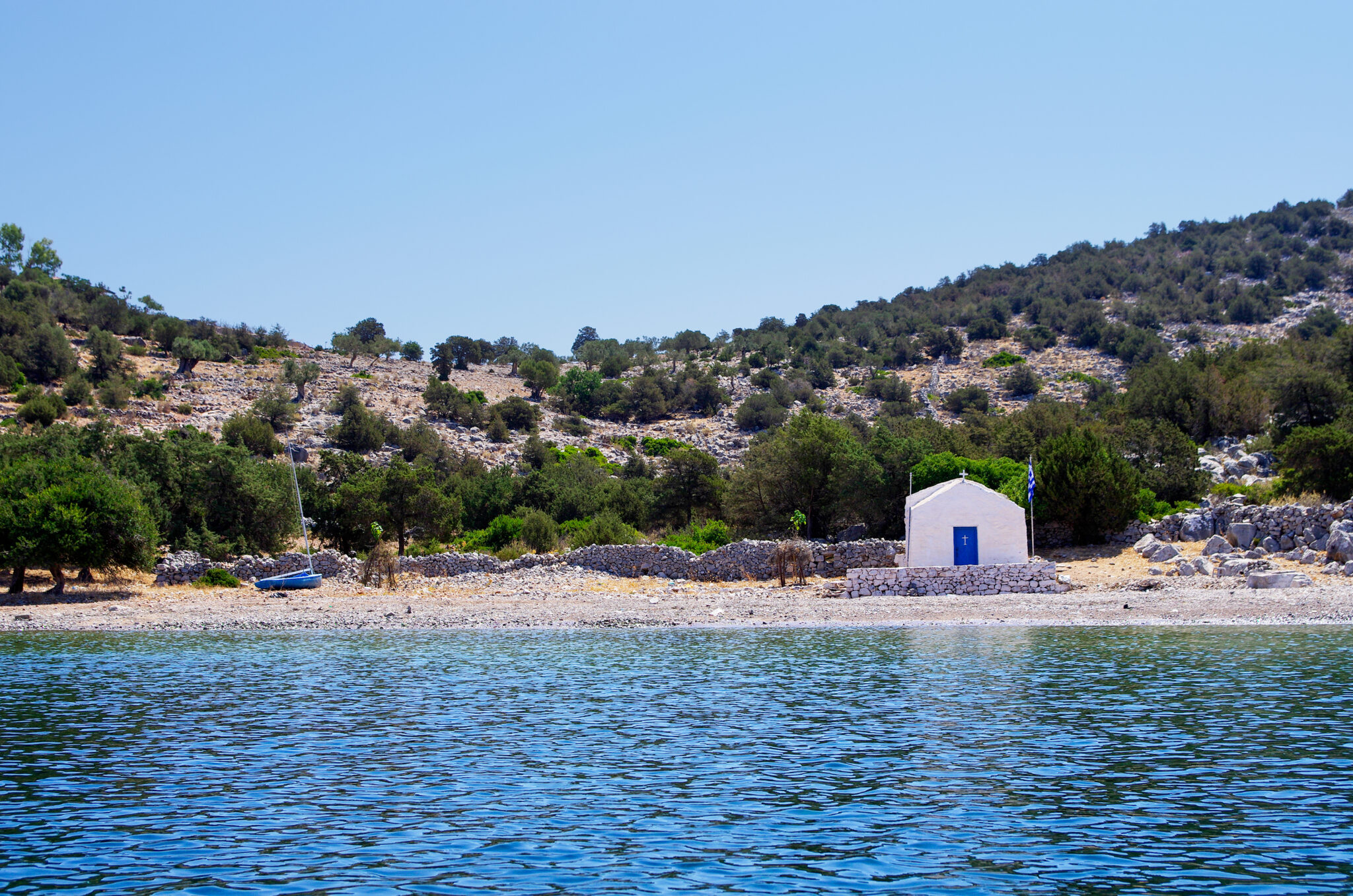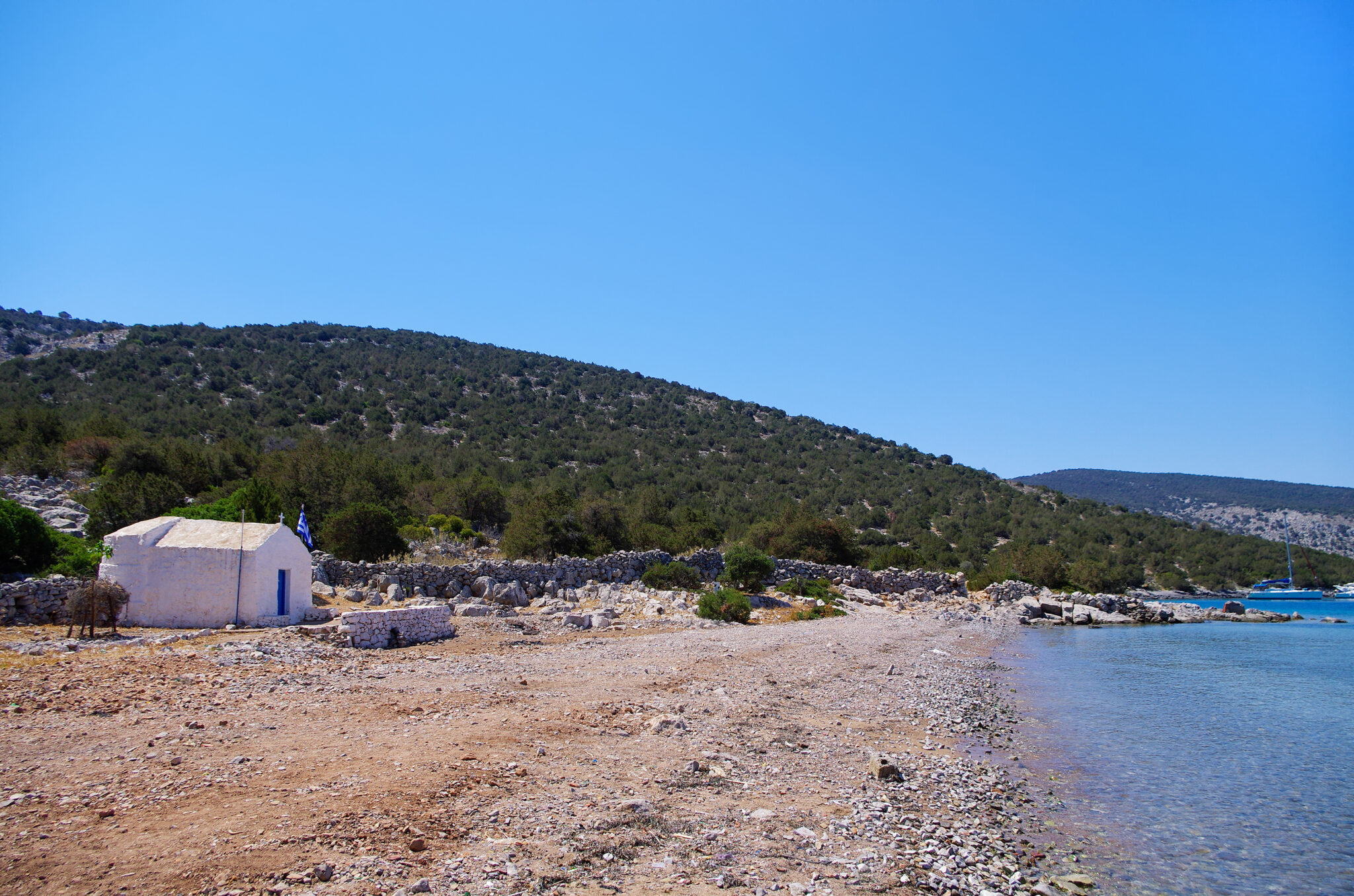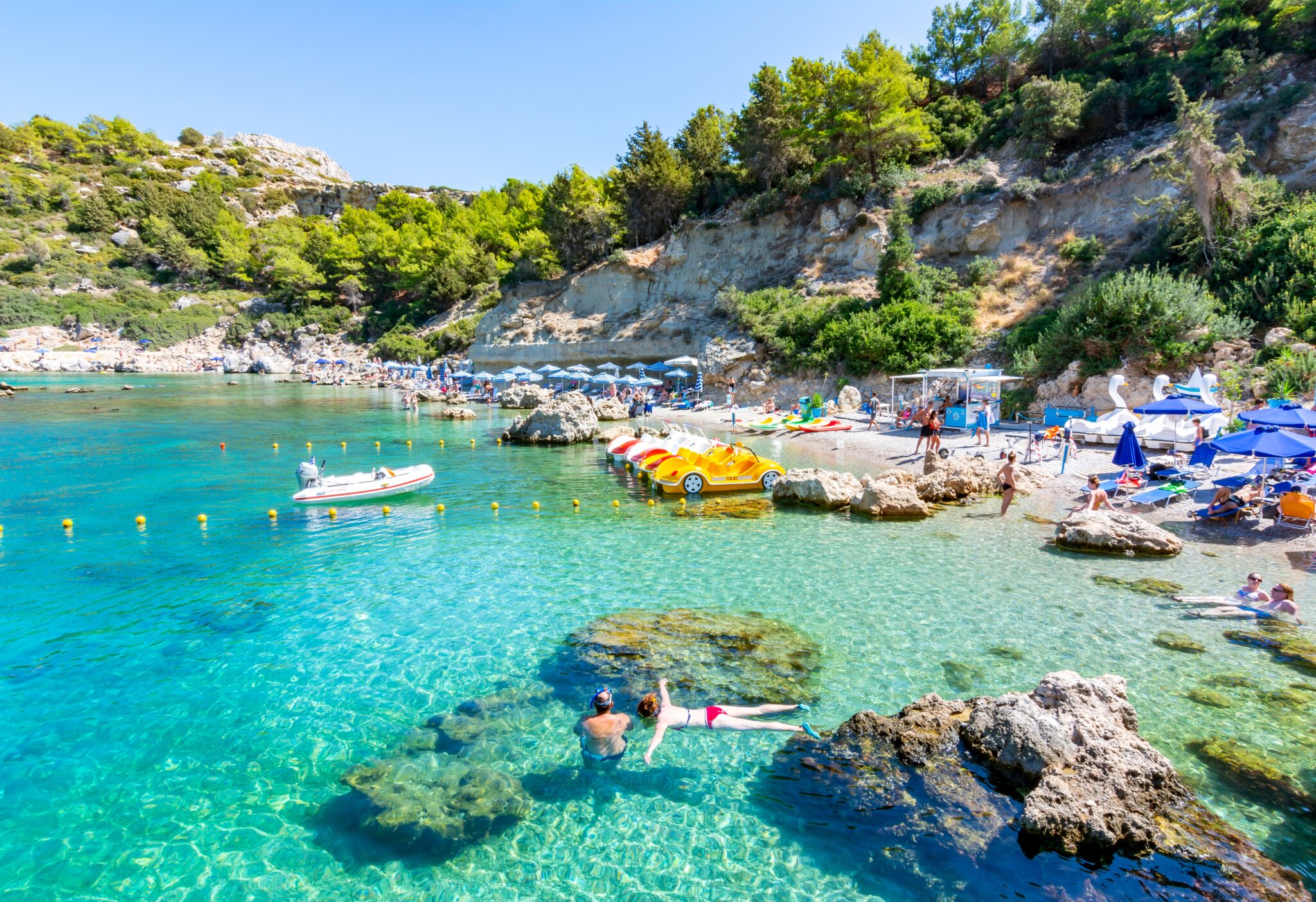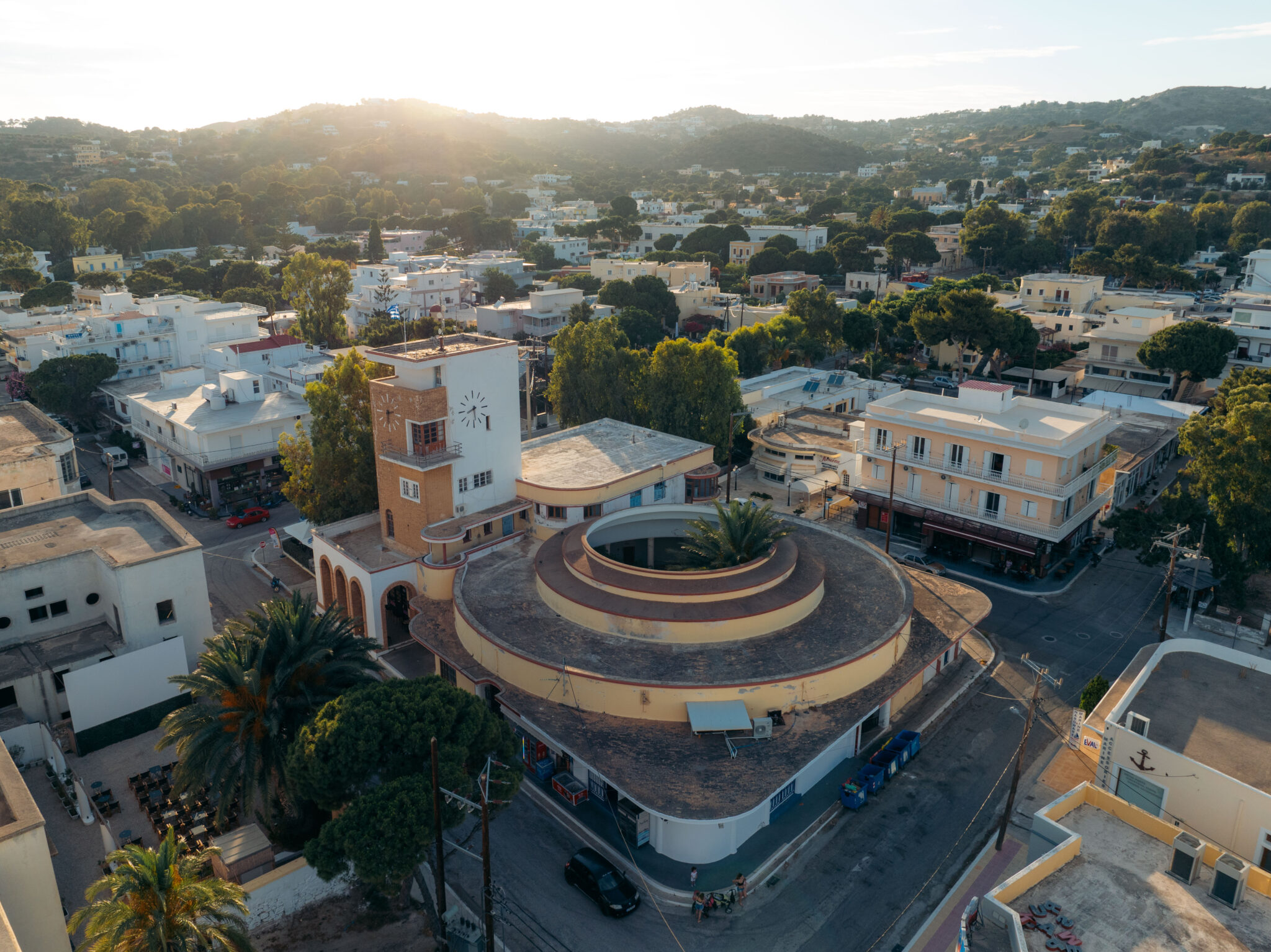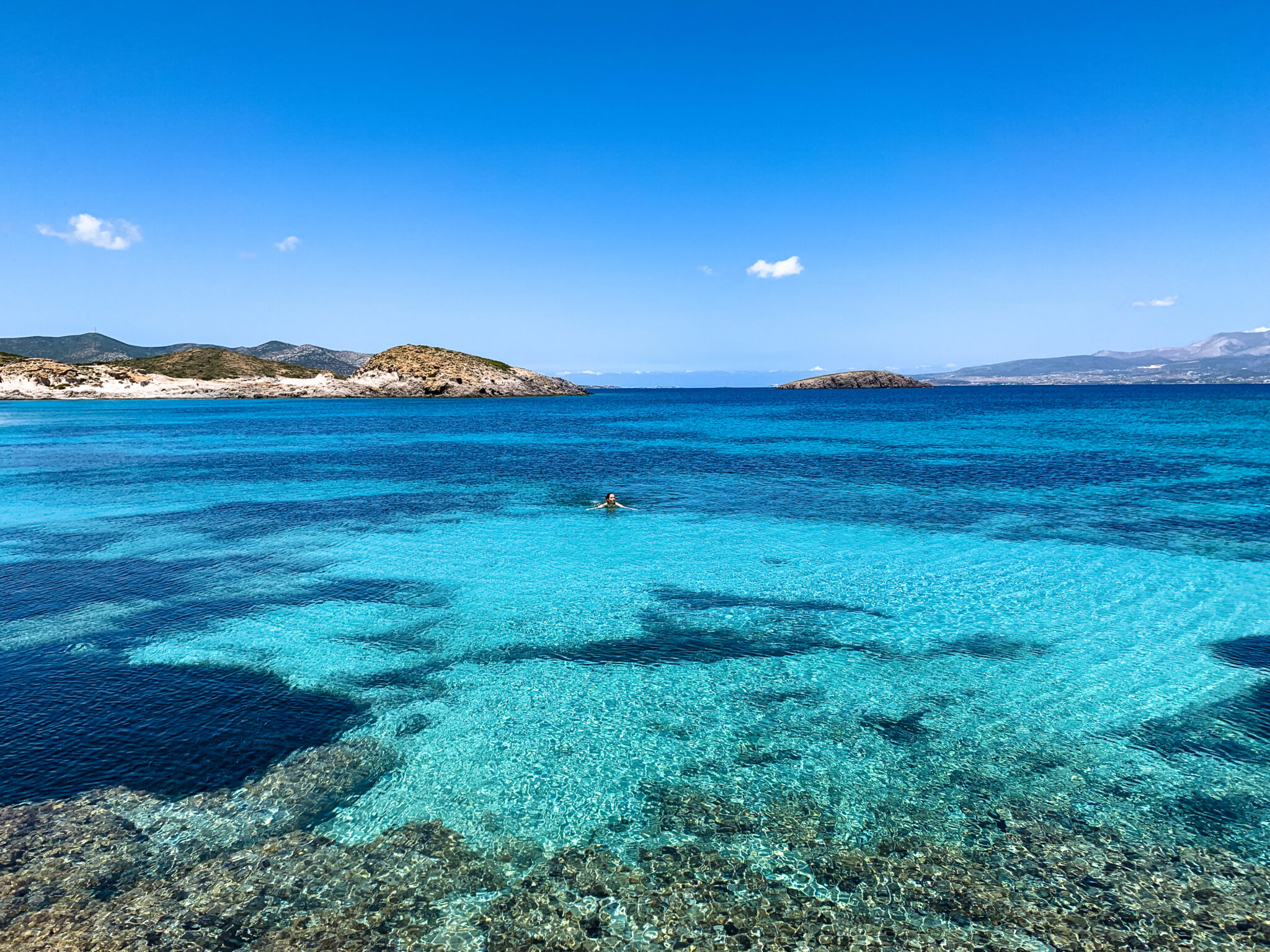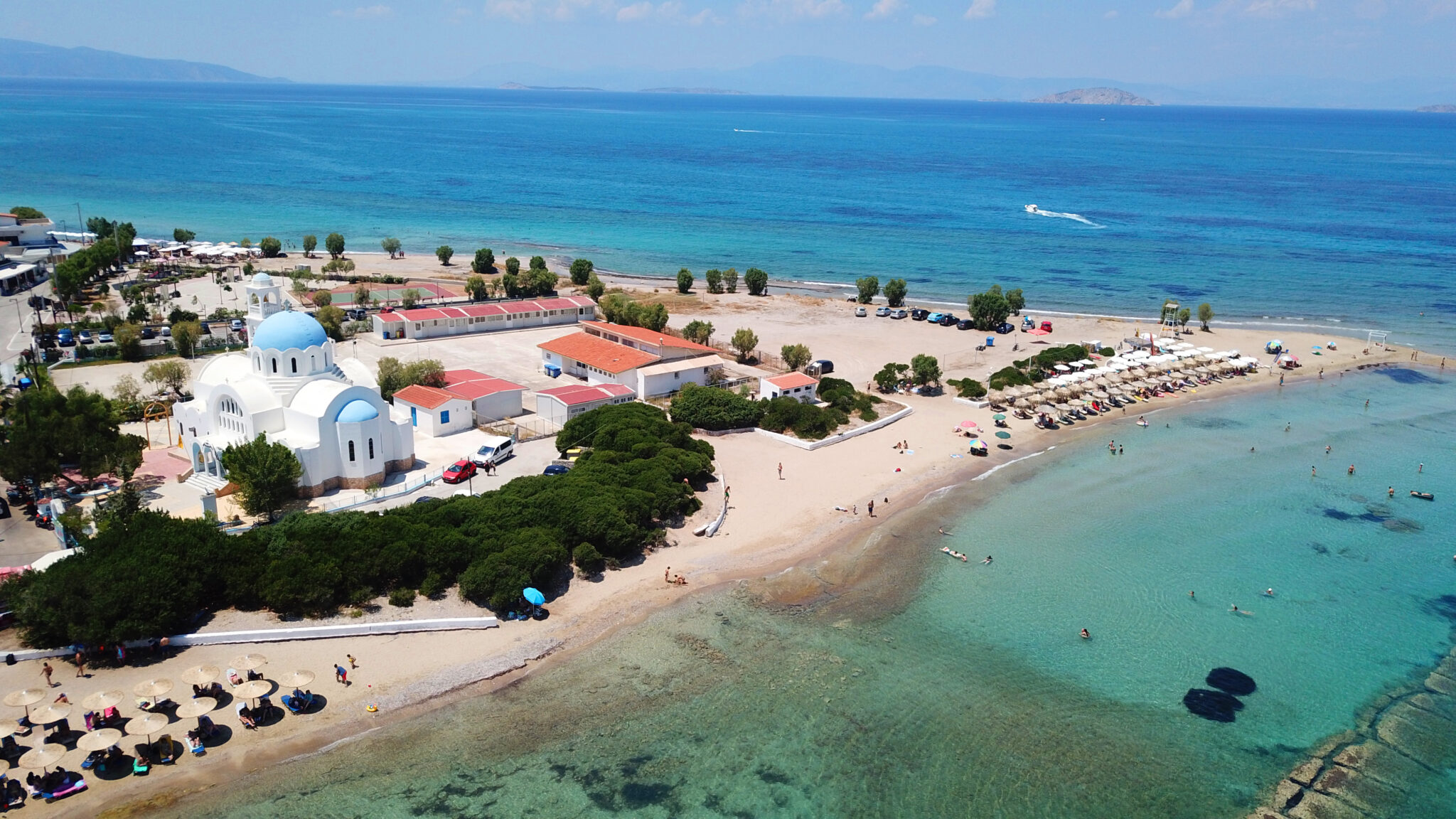Situated between Hydra and the coastline of the Argolida region in the Peloponnese’s northeast, Dokos is a small and essentially uninhabited island that has remained largely unknown domestically but is adored by frequent visitors to Hydra, Spetses and Ermioni or seafaring travellers.
Dokos flourished during antiquity and the Byzantine period as a result of its geographical position, ideal for monitoring entry into the Argolic Gulf. This explains why a town existed on the island in the past.
Dokos was known as Aperopia during antiquity for the endless (apeiro) view it offered. It is a rocky, mountainous island whose peak is at 308 metres, which really seems much higher from the summit, an illusion created by the island’s relatively small size.
Dokos was given its modern-day name during Byzantine times. The island’s strategic position led to the establishment of a castle town in the 7th century, which was later used only as a fortress. During the Greek Revolution, declared in 1821, Dokos served as a wintertime anchorage for Hydra’s boats. Following the establishment of the modern Greek State, control of Dokos was contested by the people of Hydra and Spetses.
Dokos, reached by private yacht or sea taxi from Hydra, Ermioni or Spetses, offers visitors the opportunity to swim in turquoise waters and gaze at the rocky shoreline and olive trees of the island, a uniquely beautiful setting. If you enjoy trekking, it is worth covering a trail that starts from Skintos bay and reaches the island’s highest point, via the castle and a lovely, 100-year-old stone lighthouse. This trail promises enthralling trekking, but some experience, as well as fitness, is needed.
If not interested in trekking, simply enjoy the island’s superb waters. Also make note of the fact that a significant archaeological discovery was made just off Dokos.
World’s most ancient shipwreck
In 1975, Peter Throckmorton, a pioneer of marine archaeology, discovered a large, offshore concentration of ceramic pieces, approximately 20 metres deep. Throckmorton, assisted by archaeologist Giorgos Papathanasopoulos, then estimated that a shipwreck had occurred at the location in approximately 2200 BC. Two further missions followed. One of these, research and excavation work conducted by the Institute of Marine Archaeological Research between 1989 and 1992, brought to light an abundance of discoveries, including two stone anchors, large quantities of ceramics, and stone tools, totaling 15,000 findings. According to the findings of the latter expeditions, the shipwreck was dated back to the Early Helladic II period (2700-2200 BC). Sections of the sunken ship transporting ceramics were never found. This archaeological discovery is important for a number of reasons. Firstly, the shipwreck could be the world’s most ancient ever discovered. Also, it was the first time advanced technologies were used for a shipwreck in Greece, which helped result in the wealth of discoveries. In addition, the discovery stands as significant proof of seafaring and trade activity in the Aegean Sea over 4,000 years ago.
According to a census conducted in 2001, Dokos had a population of 18 persons. This figure was primarily made up of part-time inhabitants, including shepherds, fishermen and olive tree farmers. Even today, the island does not really have any permanent residents. Some property owners come to Dokos to open up their farmsteads during the summer months. Since 1994, the entire island has been classified as an archaeological zone, which forbids the construction of any new buildings on Dokos. Also, any activity on the island requires approval from the 2nd Ephorate of Prehistoric and Classical Antiquities and an Ephorate of Maritime Antiquities with authority over Dokos. The island remains untouched by mass tourism, and will possibly stay this way, despite being close to Hydra and Argolida.
How to get there
If you do not have boat, you may reach the island by sea taxi from Hydra, Spetses or Ermioni. If choosing Hydra for your holiday stay, you will, nevertheless, need sea transport to get to some of the island’s beaches, as cars are not permitted on the island.



